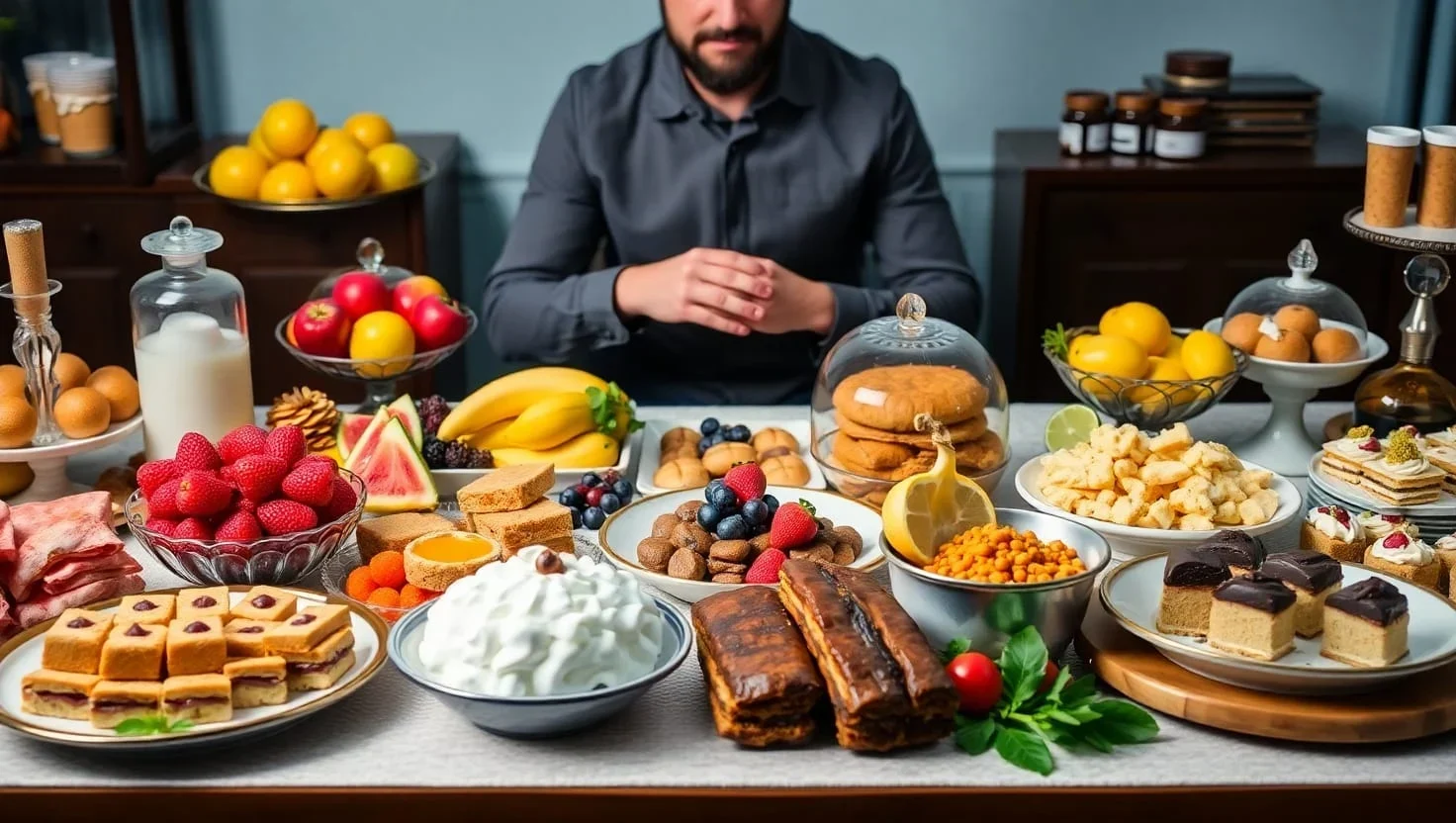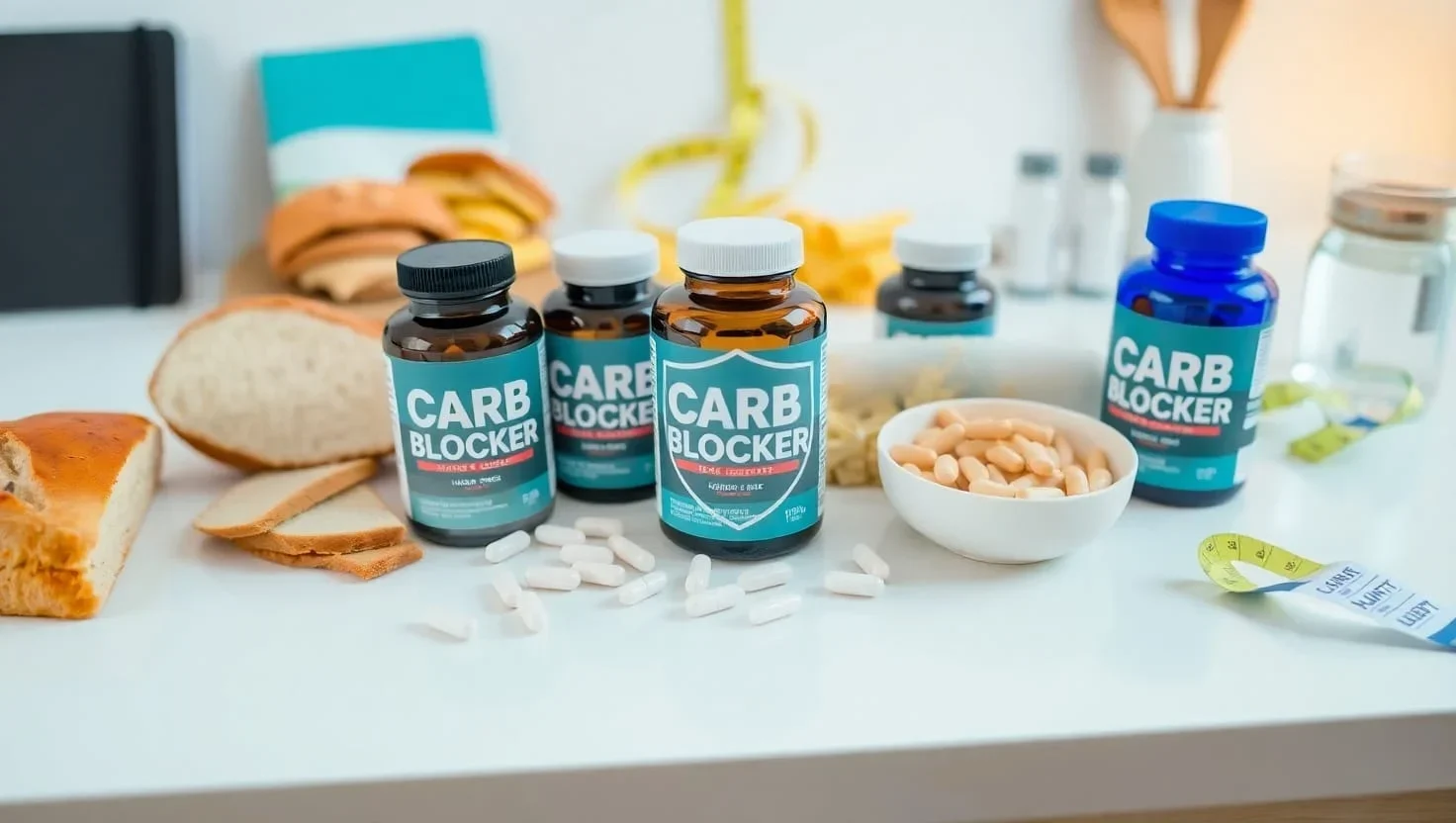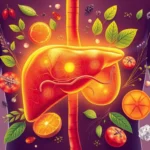Categories:
A 1500 calorie diet can change your body and health in just one month. Many people want to know if this weight loss plan works. Let’s explore the facts behind this popular diet approach.
We’ll look at how eating fewer calories affects your body. You’ll learn about the good and bad sides of this diet. This guide will help you start your weight loss journey or improve your current plan.

A 1500 calorie diet means eating only 1500 calories each day. This creates a calorie deficit, which can lead to weight loss. But is this a good long-term plan?
Let’s find out what you can expect after a month on this diet. We’ll also see how exercise can help boost your results.
🔑 Unlock the Secret: The #1 Supplement Ingredient You Need for Faster Weight Loss.
Table of Contents
Key Takeaways
- A 1500 calorie diet can create a calorie deficit for weight loss
- Results vary based on individual factors like age, gender, and activity level
- Combining diet with exercise enhances weight loss efforts
- Proper nutrient balance is crucial for health on a restricted calorie diet
- Monitoring progress and adjusting the plan as needed ensures long-term success
Understanding Your Daily Caloric Needs
Knowing your calorie needs is crucial for weight loss success. We’ll explore how to calculate your total daily energy expenditure (TDEE). We’ll also examine how activity levels affect your calorie requirements.
How to Calculate Your Total Daily Energy Expenditure
Your TDEE shows how many calories you burn daily. You can find this using a TDEE calculator or the Mifflin-St Jeor equation.
This equation uses your age, gender, height, and weight. It estimates your basal metabolic rate (BMR), which is part of your TDEE.
The Mifflin-St Jeor Equation Explained
The Mifflin-St Jeor equation reliably estimates your BMR. For men: BMR = 10 × weight (kg) + 6.25 × height (cm) – 5 × age (years) + 5.
For women: BMR = 10 × weight (kg) + 6.25 × height (cm) – 5 × age (years) – 161.
Activity Level and Calorie Requirements
Your activity level greatly affects your calorie needs. To get your TDEE, multiply your BMR by an activity factor:
- Sedentary (little exercise): BMR × 1.2
- Lightly active (1-3 days/week): BMR × 1.375
- Moderately active (3-5 days/week): BMR × 1.55
- Very active (6-7 days/week): BMR × 1.725
- Extra active (very hard exercise/physical job): BMR × 1.9
These calculations help you assess if a 1500 calorie diet suits your needs. They consider your weight loss goals and overall health requirements.
🔥 Melt Stubborn Fat Away? Discover the Supplement Everyone’s Talking About.
What Happens If You Only Eat 1500 Calories a Day for a Month
Eating 1500 calories daily can create a calorie deficit, leading to weight loss. This calorie intake can help you lose 1-2 pounds weekly. Your body may slow its metabolism to save energy.
A 1500 calorie plan might cause initial hunger and energy dips. To help, spread your meals throughout the day and choose nutrient-dense foods. Water and light exercise can help manage cravings.

| Week | Weight Loss | Energy Levels | Hunger |
|---|---|---|---|
| 1 | 2-3 lbs | Slightly lower | Increased |
| 2 | 1-2 lbs | Stabilizing | Moderate |
| 3 | 1-2 lbs | Improved | Manageable |
| 4 | 1-2 lbs | Normal | Adjusted |
Keep in mind that results can differ for each person. Pay attention to your body’s signals. Always check with a doctor before starting a new diet, especially if you have health issues.
✨ Is This the ‘Miracle’ Pill That Finally Beats Belly Fat? (See Inside!)
Creating a Healthy Calorie Deficit for Weight Loss
A calorie deficit is crucial for effective fat loss. I’ll show you how to set up a healthy energy deficit. This approach can help you lose weight safely.
Safe Rate of Weight Loss
Gradual changes are key to sustainable weight loss. Losing 1-2 pounds per week is safe and manageable. This means creating a daily calorie deficit of 500-1000 calories.
| Weekly Weight Loss Goal | Daily Calorie Deficit | Monthly Weight Loss Potential |
|---|---|---|
| 1 pound | 500 calories | 4-5 pounds |
| 2 pounds | 1000 calories | 8-10 pounds |
Understanding Energy Balance
Weight loss happens when you burn more calories than you eat. This negative energy balance makes your body use stored fat. Creating a calorie deficit encourages fat burning and leads to weight loss.
Metabolic Adaptations During Calorie Restriction
Your metabolic rate may slow down when you reduce calories. This is your body’s way of saving energy. Include strength training to maintain muscle mass and keep your metabolism active.
A balanced approach to diet and exercise is vital for long-term success.

Understanding these principles helps create a sustainable calorie deficit. This promotes fat loss while maintaining a healthy metabolic rate. You can achieve your weight loss goals effectively and safely.
💡 Why Your Diet Isn’t Working (And The Simple Supplement Fix).
Essential Foods to Include in Your 1500 Calorie Diet
A healthy diet goes beyond calorie counting. It’s about selecting nutrient-rich foods that fuel your body. Let’s explore the best foods for a 1500 calorie plan.
These choices will keep you satisfied and energized. They’ll also support your weight loss goals.

Protein-Rich Food Sources
Protein helps maintain muscle while shedding fat. Include lean meats like chicken and turkey in your meals. Fish, eggs, and Greek yogurt are excellent protein sources too.
For plant-based eaters, tofu and tempeh offer great protein options.
- Lean meats like chicken and turkey
- Fish such as salmon and tuna
- Eggs
- Greek yogurt
- Tofu and tempeh for plant-based eaters
Complex Carbohydrates and Fiber
Carbs provide energy for your body. Choose complex carbs and fiber-rich foods for lasting energy. Whole grains, sweet potatoes, and beans are great options.
Include a variety of colorful fruits and vegetables in your diet.
- Whole grains (oats, quinoa, brown rice)
- Sweet potatoes
- Beans and lentils
- Fruits and vegetables (aim for a variety of colors)
Healthy Fats and Portions
Fats play a crucial role in hormone balance. Include small portions of healthy fats in your meals. Avocados, nuts, seeds, and olive oil are excellent choices.
Fatty fish like salmon also provide beneficial omega-3 fats.
- Avocados
- Nuts and seeds
- Olive oil
- Fatty fish like salmon
Your calorie needs depend on your activity level. Fill half your plate with fruits and veggies. Add a quarter of whole grains and a quarter of lean protein.
This balance helps you meet your 1500 calorie goal. It also ensures you get all the nutrients your body needs.
✅ The Effortless Way People Are Shedding Pounds – Revealed Here!
Foods and Beverages to Avoid

On a 1500 calorie diet, being careful about food choices is key. Some foods can hinder weight loss, even if they seem healthy. Let’s look at items to limit or avoid.
Processed foods often hide extra calories and unhealthy additives. These include fast food, packaged snacks, and frozen meals. Some low-calorie options might look good, but lack important nutrients.
High-fat foods like fried chicken and burgers can quickly use up daily calories. It’s better to choose lean proteins and healthier cooking methods.
Sugary drinks are another trap. Energy drinks, fruit juices, and sodas have many empty calories. Even smoothies can be high in calories if not made carefully.
- Fast food and fried items
- Refined carbohydrates (white bread, pastries)
- Added sugars (candy, cookies)
- Sweetened beverages
- Alcohol
Avoiding these foods helps you stick to your 1500 calorie goal. Focus on nutrient-rich options instead. This approach makes it easier to achieve better health outcomes.
🔥 7 Supplements That Could Torch Calories Faster Than You Thought Possible.
Sample 1500 Calorie Meal Plan
This balanced meal plan offers 1500 calories daily for weight loss. It keeps you full while promoting healthy weight loss. Let’s check out some tasty meal options.
Breakfast Options
Kick-start your day with these energizing choices:
- Oatmeal with berries and almonds (300 calories)
- Greek yogurt parfait with granola and honey (325 calories)
- Whole grain toast with avocado and egg (350 calories)
Lunch Ideas
Try these satisfying midday meals:
- Grilled chicken salad with mixed greens (375 calories)
- Turkey and cheese wrap with baby carrots (400 calories)
- Lentil soup with a small whole grain roll (350 calories)
Dinner Suggestions
End your day with these nutritious evening meals:
- Baked salmon with roasted vegetables (425 calories)
- Lean beef stir-fry with brown rice (450 calories)
- Veggie and bean burrito bowl (400 calories)
Healthy Snacks
Curb hunger between meals with these smart choices:
- Apple slices with peanut butter (150 calories)
- Hummus with cucumber sticks (100 calories)
- Low-fat string cheese with grapes (125 calories)
This plan totals about 1500 calories a day, creating a 500 calorie deficit. Adjust portions based on your needs and activity level.
These delicious options will keep you satisfied while working towards your goals. Enjoy your journey to a healthier you!
| Meal | Calories | Protein (g) | Carbs (g) | Fat (g) |
|---|---|---|---|---|
| Breakfast | 300-350 | 15-20 | 30-40 | 10-15 |
| Lunch | 350-400 | 20-25 | 35-45 | 12-18 |
| Dinner | 400-450 | 25-30 | 40-50 | 15-20 |
| Snacks | 100-150 | 5-10 | 10-15 | 5-8 |
| Total | 1500 | 65-85 | 115-150 | 42-61 |
💪 Forget Cardio? This Supplement Might Boost Your Metabolism More.
Exercise Recommendations During Calorie Restriction
Physical activity can supercharge your 1500 calorie diet for better weight loss. Mix cardio and strength training to get the best results. This combo will boost your overall health too.
Aerobic exercises are fat-burning champions. Aim for 150 minutes of moderate-intensity cardio weekly. Try brisk walking, swimming, or cycling. If you like high-intensity workouts, 75 minutes per week will do.
Strength training builds muscle and revs up metabolism. Do resistance exercises twice a week. Target major muscle groups using bodyweight moves, bands, or weights.

| Day | Activity | Duration |
|---|---|---|
| Monday | Brisk walking | 30 minutes |
| Tuesday | Strength training | 20 minutes |
| Wednesday | Cycling | 30 minutes |
| Thursday | Rest | – |
| Friday | Swimming | 30 minutes |
| Saturday | Strength training | 20 minutes |
| Sunday | Light yoga | 20 minutes |
Listen to your body and adjust workout intensity based on your energy. Stay hydrated and rest well to support your fitness journey.
🎯 Stubborn Fat Doesn’t Stand a Chance Against These Powerful Supplements.
Tracking Progress and Making Adjustments
Monitoring your weight loss results is crucial for success. Tools that track calories and progress can significantly boost your weight loss journey.
Food Journals and Apps
Food journals and calorie apps help control your eating habits. Logging meals gives you a clear view of your daily calorie intake. This awareness keeps you aligned with your weight loss goals.

Beyond the Scale
The scale isn’t the only success measure. Notice how your clothes fit and your energy levels change. These non-scale victories can be incredibly motivating.
Adjusting Calorie Goals
You might need to adjust your calorie goals as you progress. If weight loss stalls, it’s time to reassess. Try lowering your calorie intake or increasing your activity level.
- Reassess every 2-4 weeks
- Adjust calories by 100-200 if needed
- Consider increasing exercise intensity
Sustainable weight loss is a journey, not a sprint. Track your progress and make smart adjustments along the way. You’ll be on the right path to achieving your weight loss goals.
⚡️ Boost Energy & Burn Fat Simultaneously? Yes, With This Supplement!
Potential Health Considerations and Risks

A 1500 calorie diet can help with weight loss, but it’s not for everyone. Let’s explore important health factors for sustainable weight loss.
1500 calories might work for some, but could be too low for others. Your body’s needs vary based on age, gender, height, weight, and activity level.
Eating too few calories can cause problems. These include nutrient deficiencies, fatigue, hormonal imbalances, muscle loss, and slowed metabolism.
- Nutrient deficiencies
- Fatigue and low energy
- Hormonal imbalances
- Muscle loss
- Slowed metabolism
Pay attention to your body when changing your diet. Constant hunger, irritability, or changes in hair, skin, or nails may signal too few calories.
These signs could mean your health is at risk. Talk to a healthcare professional before starting a new diet.
They can help you lose weight safely. The key is finding a balance that suits your body and lifestyle.
Conclusion
The 1500 calorie diet can be an effective weight loss strategy. It combines portion control with balanced nutrition to help shed extra pounds. This plan works well for some people, but it’s not a one-size-fits-all solution.
Find a sustainable approach that fits your lifestyle. Be patient with yourself and celebrate small wins. Pair your calorie-controlled diet with regular exercise for better results.
Track your progress, but don’t obsess over the scale. Focus on how you feel and how your clothes fit. These factors are just as important as the numbers.
📖 The Ultimate Guide to the Best Performing Weight Loss Supplements Available Now.
FAQ
For “What Happens If You Only Eat 1500 Calories a Day for a Month? Meal Plan and Weight Loss Tips”
Q: How much weight can I lose on a 1500 calories per day diet plan?
A: Following a 1500 calories a day diet for a month typically results in 4-8 pounds of weight loss for most people, though individual results vary. This approach creates a moderate calorie deficit to lose weight at a sustainable rate of about 1 pound per week. The exact amount depends on your starting body weight, metabolism, physical activity level, and how many calories you need for maintenance. Remember that healthy, successful weight loss is gradual rather than rapid, and a 1500 calorie plan creates an appropriate deficit for most adults wanting to lose weight safely.
Q: What foods should I avoid when trying to lose weight on a 1500 calorie diet?
A: When following a 1500 calorie diet plan, foods to avoid include sugary beverages, processed snacks, refined carbohydrates, fried foods, and alcohol. These items are calorie-dense but nutrient-poor, making it difficult to control your food intake while staying within your calorie limit. Instead, focus on nutrient-rich whole foods that help you feel satisfied on fewer calories: lean proteins, fruits, vegetables, whole grains, and healthy fats. Avoiding empty calories helps maximize nutrition and hunger satisfaction while creating the calorie deficit to lose weight successfully.
- Benefits | Conjugated Linoleic Acid, or CLA, may encourage greater benefits from exercise by influencing the activity of…
- Clean Ingredients | Unlike many popular bodybuilding supplements, our CLA supplement is made with clean, simple ingredie…
- Premium Quality | Sports Research CLA comes from pure, premium-quality, non-GMO safflower oil obtained from certified so…
Q: How should I structure my 1500 calorie diet plan throughout the days of the week?
A: For a successful 1500 calorie diet plan, distribute your calories evenly across all days of the week rather than restricting severely some days and eating more on others. Structure your day around 3 balanced meals (approximately 400-450 calories each) and 1-2 small snacks (100-150 calories each). Consistency helps stabilize blood sugar, control hunger, and makes the plan sustainable. Some people find meal prepping on weekends helpful for weekday success. Remember that consistency in your calorie intake is one of the most important factors for successful weight loss over a month-long period.
Q: How do I determine my specific calorie needs for weight loss?
A: To determine your specific calorie needs, start by calculating your total daily energy expenditure (TDEE) using an online calculator that factors in your age, gender, weight, height, and physical activity level. For weight loss, create a moderate deficit by consuming 500 calories less than your maintenance level. While 1500 calories works well for many adults, it may be too low for taller individuals, those assigned male at birth, or very active people, and potentially too high for shorter individuals or those assigned female at birth with lower resting energy requirements. For personalized guidance, consult a registered dietitian who can tailor recommendations to your specific body composition and goals.
- ✔️High Potency Formula: Our acetyl-l-carnitine supplement delivers an impressive 1500 mg dosage per serving. Free from f…
- ✔️Easy-to-Take Capsules: Convenient capsules for men and women daily intake, perfect for those with busy lifestyles.
- ✔️Manufactured in FDA Registered Facility: Produced in an FDA registered facility, adhering strictly to Good Manufacturi…
Q: How important is physical activity when following a 1500 calorie diet?
A: Physical activity is extremely important when following a 1500 calorie diet, as it enhances your results beyond what diet alone can achieve. Exercise helps create a larger calorie deficit by increasing the total number of calories you burn daily, encouraging your body to burn fat while preserving muscle mass. Aim for 150+ minutes of moderate activity weekly, combining cardio for calorie burning with strength training to maintain metabolism. Physical activity also improves mood, reduces stress-eating, and helps manage hunger signals. Remember that sustainable weight loss comes from both dietary changes and increased movement, not just cutting calories.
Q: What are effective ways to reach my 1500 calorie goal without feeling hungry?
A: Effective ways to reach your 1500 calorie goal while staying satisfied include focusing on high-volume, low-calorie foods like vegetables and fruits that take up stomach space; consuming adequate protein (20-30g per meal) to improve satiety; incorporating healthy fats in modest amounts; drinking plenty of water; eating fiber-rich foods that slow digestion; planning regular meals and snacks to prevent extreme hunger; using smaller plates to create visual fullness; and preparing meals at home where you can control portions and ingredients. These strategies help manage hunger while maintaining the calorie deficit needed for weight loss, making your 1500 calorie plan more sustainable for the entire month.
Q: Can I achieve successful weight loss on 1500 calories regardless of what foods I eat?
A: While technically you could lose weight eating any foods within a 1500 calorie limit (as weight loss is primarily driven by calorie deficit), the quality of those calories significantly impacts your success, health, and sustainability. A 1500 calorie diet of mostly processed foods would likely leave you hungry, nutritionally deficient, and less energetic, making it harder to maintain. For successful weight loss that lasts beyond the month, focus on nutrient-dense whole foods that provide essential vitamins, minerals, fiber, and protein. This approach not only supports weight loss but also improves overall health markers and creates the sustainable lifestyle changes necessary for long-term success.
Q: What meal plan structure works best for a 1500 calorie daily diet?
A: The most effective meal plan structure for a 1500 calorie diet typically includes 3 main meals (breakfast: 300-400 calories, lunch: 400-450 calories, dinner: 400-500 calories) and 1-2 strategic snacks (100-150 calories each). This balanced approach prevents extreme hunger by keeping blood sugar stable throughout the day. For optimal satisfaction, each meal should contain protein, fiber-rich carbohydrates, and healthy fats. Many people find success with meal prepping and planning their entire week in advance to avoid last-minute, higher-calorie choices. Personalizing this structure to fit your lifestyle and hunger patterns improves adherence—some prefer smaller, more frequent meals while others do well with larger, fewer meals within the same calorie framework.
Related Articles:
- 10 Ways Green Tea Extract Can Enhance Your Diet This Season
- 10 Carb Blockers That Will Change Your Diet Game
- What is the 80/20 Rule to Lose Weight? | The New Revolutionary Diet Plan
- 10 Game-Changing Pre-Workout Supplements for Your Spring Fitness Plan
- Which is The Most Effective Exercise for Weight Loss? | Burn Calories, Lose Weight and Lose Belly Fat
Our Partners: CSKDesignCrafts.com – DesignersReport.com – LifeCraftCentre.com
This post may contain affiliate links which means I may receive a commission for purchases made through links. There is no additional charge to you! Thank you for supporting my blog so I can continue creating free content each week!










